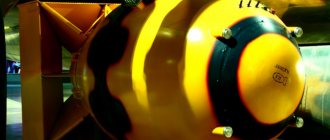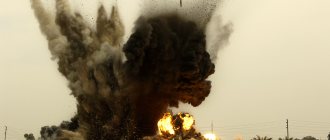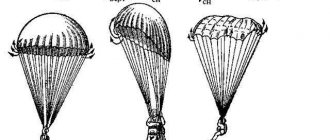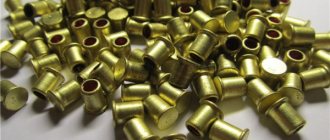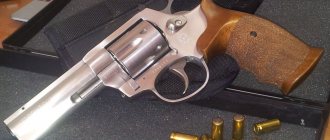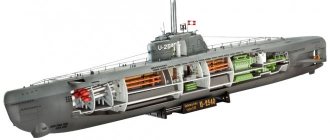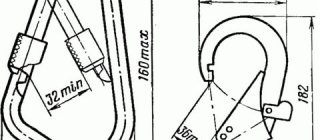Aviation bombs or aerial bombs are one of the main types of aviation ammunition, which appeared almost immediately after the birth of military aviation. An aerial bomb is dropped from an airplane or other aircraft and reaches its target under the influence of gravity.
Currently, aerial bombs have become one of the main means of destroying the enemy; in any armed conflict of recent decades (in which aviation was used, of course), their consumption amounted to tens of thousands of tons.
Modern aerial bombs are used to destroy enemy personnel, armored vehicles, warships, enemy fortifications (including underground bunkers), and civilian and military infrastructure. The main damaging factors of aerial bombs are the blast wave, fragments, and high temperature. There are special types of bombs that contain various types of toxic substances to destroy enemy personnel.
Since the advent of military aviation, a huge number of types of aerial bombs have been developed, some of which are still used today (for example, high-explosive aerial bombs), while others have long been withdrawn from service and have become part of history (rotational dispersal aerial bomb). Most types of modern aerial bombs were invented before or during World War II. However, current aerial bombs are still different from their predecessors - they have become much “smarter” and more deadly.
Guided aerial bombs (UAB) are one of the most common types of modern high-precision weapons; they combine significant warhead power and high accuracy in hitting a target. In general, it should be noted that the use of high-precision weapons is one of the main directions in the development of strike aviation; the era of carpet bombing is gradually becoming a thing of the past.
If you ask the average person what types of aerial bombs there are, he is unlikely to be able to name more than two or three varieties. In fact, the arsenal of modern bomber aircraft is huge, it includes several dozen different types of ammunition. They differ not only in caliber, the nature of the destructive effect, the weight of the explosive and the purpose. The classification of aircraft bombs is quite complex and is based on several principles, and it has some differences in different countries.
However, before moving on to descriptions of specific types of aircraft bombs, a few words should be said about the history of the development of this ammunition.
Story
The idea of using aircraft in military affairs was born almost immediately after their appearance. At the same time, the simplest and most logical way to harm an adversary from the air was to drop something deadly on his head. The first attempts to use airplanes as bombers were made even before the outbreak of World War I - in 1911, during the Italo-Turkish War, the Italians dropped several bombs on Turkish troops.
During the First World War, in addition to bombs, metal darts (flechettes) were also used to hit ground targets, which were more or less effective against enemy personnel.
The first aerial bombs were often hand grenades, which the pilot simply threw from his cockpit. It is clear that the accuracy and effectiveness of such bombing left much to be desired. And the planes themselves of the initial period of the First World War were not very suitable for the role of bombers; airships, capable of carrying several tons of bombs and covering a distance of 2-4 thousand km, were much more effective.
The first full-fledged WWI bomber was the Russian aircraft Ilya Muromets. Soon, similar multi-engine bomber aircraft appeared in service with all parties to the conflict. At the same time, work was underway to improve their main means of destroying the enemy - aerial bombs. The designers were faced with several tasks, the main one of which was the ammunition fuse - it was necessary to ensure that it would fire at the right moment. The stability of the first bombs was insufficient - they fell to the ground sideways. The first aerial bombs were often made from the casings of artillery shells of various calibers, but their shape was not particularly suitable for precision bombing, and they were very expensive.
After the creation of the first heavy bombers, the military needed serious caliber ammunition capable of causing really serious damage to the enemy. By mid-1915, bombs of 240 and even 400 kg caliber appeared in service with the Russian army.
At the same time, the first samples of incendiary bombs based on white phosphorus appeared. Russian chemists have managed to develop a cheap way to obtain this scarce substance.
In 1915, the Germans began to use the first fragmentation bombs; a little later, similar ammunition appeared in the arsenal of other countries participating in the conflict. Russian inventor Dashkevich came up with a “barometric” bomb, the fuse of which was triggered at a certain height, scattering a large amount of shrapnel over a certain area.
Summarizing the above, we can come to an unambiguous conclusion: in just a few years of the First World War, aircraft bombs and bombers went an incredible way - from metal arrows to half-ton bombs of a completely modern form with an effective fuse and an in-flight stabilization system.
During the period between the world wars, bomber aviation developed rapidly, the range and payload of aircraft became larger, and the design of aircraft ammunition was improved. At this time, new types of aerial bombs were developed.
Some of them should be discussed in more detail. In 1939, the Soviet-Finnish war began and almost immediately USSR aviation began massive bombing of Finnish cities. Among other ammunition, so-called rotary dispersal bombs (RRAB) were used. It can be safely called a prototype of future cluster bombs.
A rotary dispersal bomb was a thin-walled container containing a large number of small bombs: high-explosive, fragmentation or incendiary. Thanks to the special design of the tail, the rotary dispersal bomb rotated in flight and scattered submunitions over a large area. Since the USSR assured that Soviet planes were not bombing Finnish cities, but were dropping food to the starving, the Finns wittily nicknamed the rotary-dispersal air bombs “Molotov’s bread bins.”
During the Polish campaign, the Germans for the first time used real cluster bombs, which in their design are practically no different from modern ones. They were thin-walled ammunition that detonated at the required height and released a large number of small bombs.
The Second World War can easily be called the first military conflict in which combat aviation played a decisive role. The German Ju 87 Stuka attack aircraft became the symbol of a new military concept - blitzkrieg, and American and British bombers successfully implemented the Douai doctrine, wiping out German cities and their inhabitants into rubble.
At the end of the war, the Germans developed and for the first time successfully used a new type of aviation ammunition - guided aerial bombs. With their help, for example, the flagship of the Italian fleet, the newest battleship Roma, was sunk.
Of the new types of aerial bombs that first began to be used during the Second World War, it is worth noting anti-tank, as well as jet (or rocket) aerial bombs. Anti-tank bombs are a special type of aircraft ammunition designed to combat enemy armored vehicles. They usually had a small caliber and a cumulative warhead. An example of this is the Soviet PTAB bombs, which were actively used by Red Army aviation against German tanks.
Rocket bombs are a type of aircraft munition equipped with a rocket engine, which gives it additional acceleration. The principle of their operation was simple: the “penetrating” ability of a bomb depends on its mass and height of release. In the USSR before the war, in order to guarantee the destruction of a battleship, it was necessary to drop a two-ton bomb from a height of four kilometers. However, if you install a simple rocket accelerator on the ammunition, then both parameters can be reduced several times. It was never possible to produce such ammunition then, but the rocket acceleration method has found application in modern concrete-piercing aerial bombs.
On August 6, 1945, a new era in the development of mankind began: it became acquainted with a new destructive weapon - the nuclear bomb. This type of aircraft munition is still in service around the world, although the importance of nuclear bombs has decreased significantly.
Combat aviation continuously developed during the Cold War, and aerial bombs also improved along with it. However, nothing fundamentally new was invented during this period. Guided aerial bombs and cluster munitions were improved, and bombs with a volumetric detonating warhead (vacuum bombs) appeared.
Since about the mid-70s, aerial bombs have increasingly become precision-guided weapons. If during the Vietnam campaign UAB accounted for only 1% of the total number of aerial bombs dropped by American aircraft on the enemy, then during Operation Desert Storm (1990) this figure increased to 8%, and during the bombing of Yugoslavia - to 24 %. In 2003, 70% of American bombs in Iraq were precision weapons.
The improvement of aviation ammunition continues to this day.
Oh, what a “butterfly bomb” you are!
The Central Bank reduced the rate to 8.5%
The Central Bank of the Russian Federation reduced the key rate to the minimum in three years—from 9% to 8.5% per annum. The regulator expects inflation at the end of the year at 4% and GDP growth at 1.7-2.2%. This is the fourth decline this year. At the same time, the possibility of further reduction “on the horizon of the next two quarters” was noted. But to maintain inflation near the given level, the Bank of Russia will continue to pursue a moderately tight monetary policy.
Billion for pensions
The Russian government additionally distributed a billion rubles between 7 regions for the payment of regional social benefits in addition to pensions in 2017, which are paid to maintain the income of non-working pensioners at a level not lower than the subsistence level at their place of residence. This year’s Federal Budget provided for interbudgetary transfers in the amount of 6.4 billion for 13 regions that declared a need for co-financing of additional payments. The billion is distributed between the budgets of the Republic of Komi and Sakha (Yakutia), Kamchatka, Primorsky and Khabarovsk territories, Arkhangelsk and Moscow regions. The total number of recipients of additional payments in 2022 is about 407,000.
Increase in excise tax on gasoline
The decision to increase excise taxes on fuel by 1 rub./l (in two stages of 50 kopecks each) was made by the government. Earlier, RBC wrote that such a proposal was made by the Ministry of Transport. The money will go to roads in Crimea and Kaliningrad. According to Vedomosti, the increase should occur according to this scheme from January 1 and July 1. Increase by 50 kopecks. exceeds the indexation provided for by the Tax Code (4%), that is, by approximately 30 kopecks. for 1 liter of gasoline and 23 kopecks. for 1 liter of diesel fuel. Additional income from such an increase will amount to 55-60 billion rubles. “Due to the increase in excise tax by 50 kopecks. 1 liter of fuel at retail may rise in price by 1.5%, or 60 kopecks. Also, prices may be affected by market risks until the end of 2022. Meanwhile, the increase in gasoline prices in Russia has already doubled inflation.
test purchases
Prime Minister of the Russian Federation D. Medvedev signed an order to introduce a bill to the State Duma, according to which Rospotrebnadzor will be able to make test purchases of goods and services from individual entrepreneurs and legal entities, according to the Cabinet of Ministers website.
Bus stations will be updated
Since July 1, 20117, a number of new ones have been added to the rules of the Ministry of Transport of the Russian Federation “On approval of minimum requirements for the equipment of bus terminals and bus stations.” Previously, the requirements included the need for a waiting room, a mother and child room, a toilet, a storage room, and a catering facility. Now they have added ticket offices and/or ticket vending machines, luggage storage, a health center, a driver’s rest room with seating, reported the press service of the State Unitary Enterprise of the Republic of Kazakhstan “Krymavtotrans”, which is in charge of 4 bus stations and 54 bus stations. Almost all of them require equipment or reconstruction in accordance with the order. So, this year in Dzhankoy, Alushta, Krasnoperekopsk, Evpatoria, Yalta, Belogorsk and Kerch, cash office equipment was updated. Toilet pavilion modules have been installed at the Kerch bus station and Alushta bus station. For passengers with children at the Simferopol bus station there is a mother and child room. Additionally, for the convenience of passengers, a screen has been installed at the Evpatoria bus station that displays updated information with flight schedules. The total amount planned for the reconstruction and equipment of Krymavtotrans transport infrastructure facilities in 2017 is more than 18 million rubles.
Certification Center of the Republic of Kazakhstan
The regional certification center, noted in the Ministry of Economic Development of the Republic of Kazakhstan, will train specialists in the project management program for further implementation of the system in Crimea. The center was created on the basis of the state institution “Center for Investment and Regional Development” and in partnership with the autonomous non-profit organization “Center for Assessment and Development of Project Management”. He provides assistance in distance learning and passing PM Standard certification tests. The first certified project manager in Crimea was the Deputy Minister of Economic Development of the Republic of Kazakhstan N. Chaban.
What is hidden in offshore companies?
8% of the finances of the entire population of the Earth are concentrated in offshore companies. This is 10% of world GDP, or 5.6 trillion (at the exchange rate of 2007, taken as a reference point). At the same time, Russians hold offshore assets amounting to 60% of Russian GDP—almost 60 trillion rubles, or more than $1 trillion, according to the American non-profit organization National Bureau of Economic Research (NBER). Overall, despite a decline in banking secrecy in recent years, statistics remain highly opaque, making it difficult to estimate global wealth, the NBER notes.
In harness with the USA
The United States and Ukraine refused to work with the text of the Russian draft resolution on the deployment of UN peacekeepers in Donbass, said Russia’s permanent representative to the UN V. Nebenzya. “This project has already been discussed within the Security Council. Kyiv and Washington stated that they were not ready to work further on the text; they would have significant comments. Perhaps Kyiv will present an alternative project,” the diplomat noted. At the same time, he assured that Russia will continue to work on the document.
Kyiv "dreamer"
The Ukrainian authorities need to learn to look at the world soberly, voicing their desire to return Crimea to their jurisdiction, said the head of the State Committee of the Council of Ministers of the Republic of Kazakhstan for Interethnic Relations Z. Smirnov. Earlier, Ukrainian media reported that Kyiv intends to return Crimea to its control in 2022. President Poroshenko said that “together with a visa-free regime and an association agreement, we will return Yalta.” “Mr. Poroshenko needs to look at the world soberly; his desires absolutely do not correspond to reality. Yalta, like the entire Russian Crimea, is unlikely to be hospitable for any of the representatives of the Kyiv regime,” Smirnov said.
Hryvnia sheets!
Customs officers at the Novosibirsk airport seized counterfeit 4,600 Moldovan lei and 920 sheets of genuine Ukrainian hryvnia, but not cut into banknotes, from a Chinese citizen leaving for his homeland. The examination showed that the currency of Moldova turned out to be counterfeit, and 920 sheets with Ukrainian banknotes of 5, 10 and 20 UAH printed on them for a total of 819,000 UAH were genuine. “How sheets with Ukrainian money uncut into banknotes fell into the hands of a Chinese citizen and for what purpose he brought counterfeit Moldovan lei to his homeland remains to be determined by the investigation,” the customs office noted.
Air bombs, their design features and classification
An aircraft bomb is a type of ammunition that consists of a body, a stabilizer, ammunition and one or more fuses. Most often, the body has an oval-cylindrical shape with a conical tail. The casings of fragmentation, high-explosive and high-explosive fragmentation bombs (OFAB) are made in such a way as to produce the maximum amount of fragments upon explosion. In the bottom and bow parts of the body there are usually special cups for installing fuses; some types of bombs also have side fuses.
The explosives used in aircraft bombs vary greatly. Most often this is TNT or its alloys with hexogen, ammonium nitrate, etc. In incendiary ammunition, the warhead is filled with incendiary compounds or flammable liquids.
For suspension on the body of aerial bombs there are special ears, with the exception of small-caliber ammunition, which is placed in cassettes or bundles.
The stabilizer is designed to ensure stable flight of ammunition, reliable fuse operation and more effective target destruction. The stabilizers of modern aerial bombs can have a complex design: box-shaped, feathery or cylindrical. Aircraft bombs used from low altitudes often have umbrella fins that deploy immediately after release. Their task is to slow down the flight of the ammunition to allow the aircraft to move to a safe distance from the point of explosion.
Modern aircraft bombs are equipped with different types of fuses: impact, non-contact, remote, etc.
If we talk about classifications of aircraft bombs, there are several of them. All bombs are divided into:
- basic;
- auxiliary.
Basic aircraft bombs are designed to directly destroy various targets.
Auxiliary ones contribute to the solution of one or another combat mission, or they are used in training troops. These include lighting, smoke, propaganda, signal, navigational, training and simulation.
Basic aerial bombs can be divided according to the type of damage they cause:
- Regular. These include ammunition filled with conventional explosives or incendiary substances. Targets are hit due to a blast wave, fragments, and high temperature.
- Chemical. This category of aviation bombs includes ammunition filled with chemical agents. Chemical bombs have never been used on a large scale.
- Bacteriological. They are stuffed with biological pathogens of various diseases or their carriers and have also never been used on a large scale.
- Nuclear. They have a nuclear or thermonuclear warhead; damage occurs due to a shock wave, light radiation, radiation, or electromagnetic wave.
There is a classification of aerial bombs based on a narrower definition of lethality; it is used most often. According to it, aerial bombs are:
- high explosive;
- high-explosive fragmentation;
- fragmentation;
- high-explosive penetrating (have a thick body);
- concrete-breaking;
- armor-piercing;
- incendiary;
- high explosive incendiary;
- poisonous;
- volumetric detonating;
- fragmentation-poisonous.
The list goes on.
The main characteristics of aerial bombs include: caliber, efficiency indicators, filling factor, characteristic time and range of combat use conditions.
One of the main characteristics of any aerial bomb is its caliber. This is the mass of the ammunition in kilograms. Quite conventionally, bombs are divided into small, medium and large caliber ammunition. Which particular group a particular aerial bomb belongs to largely depends on its type. So, for example, a 100-kilogram high-explosive bomb is classified as a small caliber, and its fragmentation or incendiary counterpart is classified as medium.
The filling ratio is the ratio of the bomb's explosive mass to its total weight. For thin-walled high-explosive ammunition it is higher (about 0.7), while for thick-walled high-explosive ammunition - fragmentation and concrete-piercing bombs - it is lower (about 0.1-0.2).
Characteristic time is a parameter that is associated with the ballistic properties of a bomb. This is the time of its fall when dropped from an aircraft flying horizontally at a speed of 40 m/s from a height of 2 thousand meters.
The expected effectiveness is also a rather arbitrary parameter for aircraft bombs. It differs for different types of this ammunition. The assessment may be related to the size of the crater, the number of fires, the thickness of the pierced armor, the area of the affected area, etc.
The range of combat use conditions shows the characteristics at which bombing is possible: maximum and minimum speed, altitude.
One of the important and sad events in the history of mankind was the Second World War. The number of deaths resulting from the fighting is in the millions. Most of them became victims of German bombs used in aviation, the power of which at that time seemed prohibitive. SC-10 high explosive bomb
At that time, the bomb could be found in two versions: with a cast and forged body.
Its weight reached 12 kg, and the mass of the explosive was 0.9 kg. The length of the bomb, filled with steel balls and filled with concrete, was 585 mm; diameter - 86 mm. The SC-10 had 4 steel stabilizers attached to the ribs, which in turn were welded to the hull. The fuse was mounted on the nose of the bomb, whose tail and body were painted dark gray. SC-50 High Explosive Bomb
The SC-50 body was made of cast steel, which was further machined.
The color of the body and tail is green or dark gray. 4 stabilizers welded together were also made of sheet steel. The tail was secured using 8 screws. The destructive power of the bomb began with a psychological effect on a person: the tail section was equipped with a special device that made a loud whistle. Bomb weight - 55.5 kg. Explosive mass - 24.4 kg. Length - 1100 mm. High explosive bomb SC-250
Perhaps the most common explosive device of the German Air Force.
This German-made bomb could be used for almost any bomber. The SC-250 is divided into three parts: 1. Nose cone. 2. Body. 3. Base plate equipped with 4 stabilizers. The body was made from different materials, which allows us to divide the SC-250 into three types. It could also be classified according to different types of fuses (mechanical, electrical). Thus, the fuses were equipped with a deceleration mechanism, as well as to counteract the defuse of the bomb. The explosive device also emitted a loud whistle to intimidate the enemy. Bomb mass - 250 kg. Explosive mass - 130 kg. Length - 1630-1651 mm. High explosive bomb SC-1000
SC-1000 could be found in three modifications: 1. SC1000C.
2. SC1000L. 3. SC1000L2. Each of them had its own weight and size. The middle part of the bomb is thin-walled and cylindrical. The stabilizer is located on a screwed-on magnesium tail fairing. In order to reduce the depth of penetration of the bomb into the ground, as well as to increase the shock wave, the SC-1000 was equipped with a ring in the head section. In addition, it was equipped with various fuses. Among other things, it was often used against unarmored ships and submarines. Weight - 1002 - 1090 kg. Explosive mass - 530 - 620 kg. Length - 2527 - 2781 kg. SC-2500 High Explosive Bomb
This bomb had an aluminum body to which the tail and head parts were welded. The fuse was placed inside the device. Only certain aircraft models could drop such an aerial bomb. Its main purpose is the destruction of large ships. Weight - 2450 kg. Explosive mass - 1700 kg. Length: 3912 mm.
Types of aerial bombs
The most commonly used aerial bombs are high explosives. Even a small 50 kg bomb contains more explosive than a 210 mm gun shell. The reason is very simple - the bomb does not need to withstand the enormous loads that a projectile in a gun barrel is subjected to, so it can be made thin-walled. The projectile body requires precise and complex processing, which is absolutely not necessary for an aerial bomb. Accordingly, the cost of the latter is much lower.
It should be noted that using high-explosive bombs of very large calibers (above 1 thousand kg) is not always rational. As the mass of the explosive increases, the damage radius does not increase too significantly. Therefore, it is much more effective to use several medium-power ammunition over a large area.
Another common type of aerial bomb is fragmentation bomb. The main target of such bombs is enemy personnel or civilians. These munitions are designed to produce large amounts of fragments after detonation. They usually have a notch on the inside of the body or ready-made striking elements (most often balls or needles) placed inside the body. When a hundred-kilogram fragmentation bomb explodes, it produces 5-6 thousand small fragments.
As a rule, fragmentation bombs have a smaller caliber than high-explosive bombs. A significant disadvantage of this type of ammunition is the fact that it is easy to hide from a fragmentation bomb. Any field fortification (trench, cell) or building is suitable for this. Nowadays, cluster fragmentation munitions, which are a container filled with small fragmentation submunitions, are more common.
Such bombs cause significant casualties, with civilians suffering the most from their effects. Therefore, such weapons are prohibited by many conventions.
Concrete bombs. This is a very interesting type of ammunition; its predecessor is considered to be the so-called seismic bombs, developed by the British at the beginning of World War II. The idea was this: make a very large bomb (5.4 tons - Tallboy and 10 tons - Grand Slam), raise it higher - about eight kilometers - and drop it on the head of the adversary. The bomb, accelerating to enormous speed, penetrates deep underground and explodes there. As a result, a small earthquake occurs, which destroys buildings over a large area.
Nothing came of this idea. The underground explosion, of course, shook the soil, but clearly not enough to collapse the buildings. But he destroyed underground structures very effectively. Therefore, already at the end of the war, British aviation used such bombs specifically to destroy bunkers.
Today, concrete-piercing bombs are often equipped with a rocket booster so that the ammunition gains greater speed and penetrates deeper into the ground.
Vacuum bombs. These aircraft munitions became one of the few post-war inventions, although the Germans were still interested in volumetric explosion munitions at the end of World War II. The Americans began to use them en masse during the Vietnam campaign.
The principle of operation of volumetric explosion aircraft ammunition - this is a more correct name - is quite simple. The warhead of the bomb contains a substance that, upon detonation, is detonated by a special charge and turns into an aerosol, after which the second charge sets it on fire. Such an explosion is several times more powerful than a normal one, and here’s why: ordinary TNT (or other explosives) contains both an explosive and an oxidizing agent, a “vacuum” bomb uses air oxygen for oxidation (combustion).
True, an explosion of this type is of the “burning” type, but in its effect it is in many ways superior to conventional ammunition.
